Keeping It Safe Robert Tutterow
Interschutz, a trade show for fire and emergency services, is held once every five years in Germany, usually in Hannover. The majority of the vendors are European based. Because of COVID, this year’s show was the first since 2015 and there were not as many exhibits as in previous years.

PPE in Europe is an interesting study, as it often is ahead of the U.S. market. For example, Europe was the first to use leather boots and mask-mounted SCBA regulators, establish cleaning protocols, and procure cleaning equipment. And, their helmets are far more functional and integrate with the rest of the PPE ensemble in ways not possible with U.S.-style helmets.
One of the first items that got my attention was a positive pressure respirator by Tiki. The company designed the unit for hospital workers, but it probably has application in the firefighting world. Imagine being dispatched to a COVID-related call and being able to don simple, lightweight respiratory protection without the weight and bulk of an SCBA. The electronic unit does not require a cylinder. It has a filtration system (inhale and exhale), has a 1- to 2.5-hour duration, and is reusable (photo 1).
- Observations from Interschutz 2022
- Interschutz 2015: a Platform for International Exposure
- Interschutz 2015 Fire Apparatus by Dave Stewardson
- Smeal Displays CORE Pumper at Interschutz 2015
- Allison Transmission to Showcase Products at Interschutz 2015

1 Positive pressure respirator by Tiki. (Photos by author.)
The cleaning equipment for PPE was by far the largest ever displayed at Interschutz. There were multiple variations of washer/extractors, drying equipment, and machines for cleaning PPE elements other than pants and coats (photo 2).
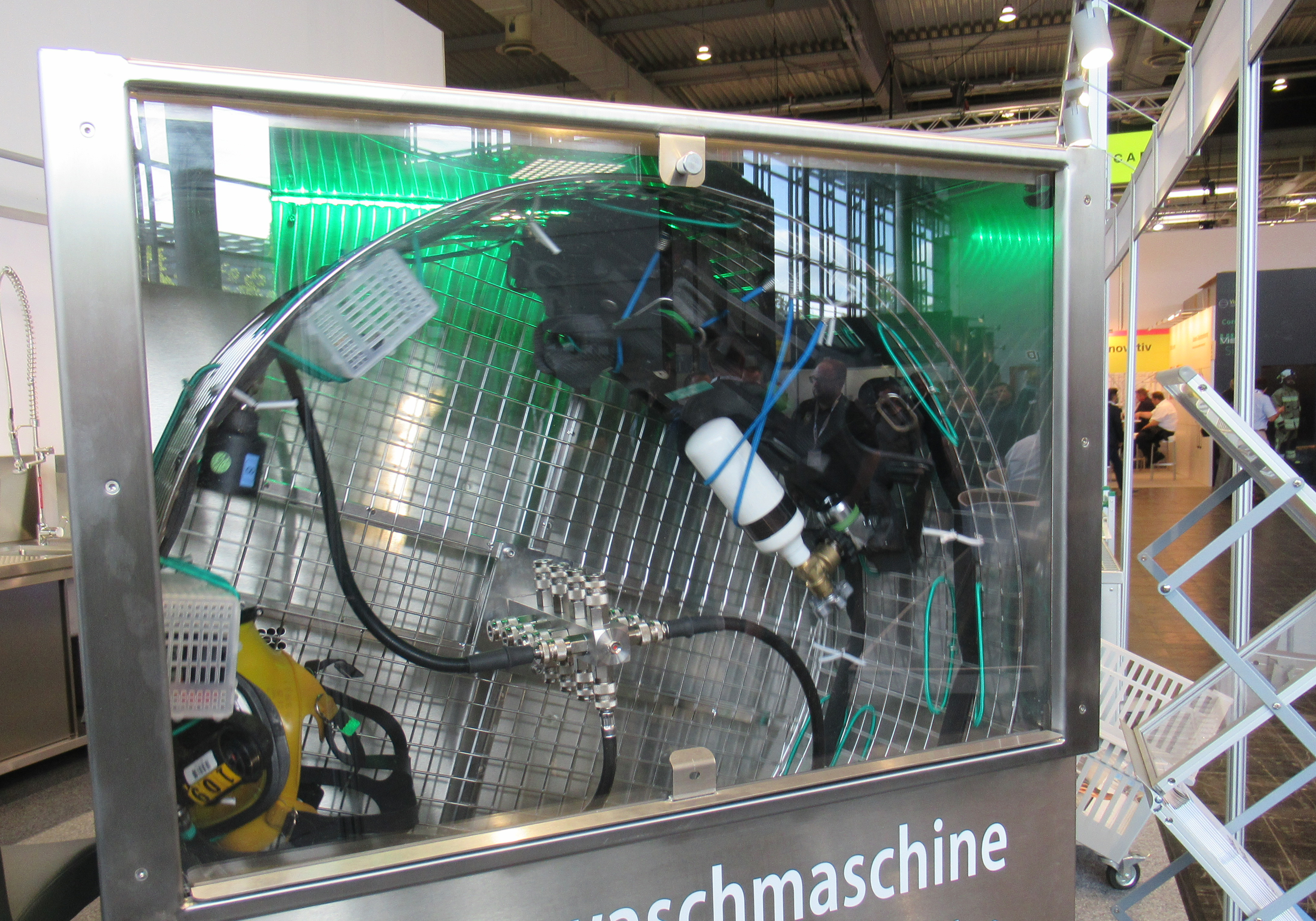
2 Washer/extractors, drying equipment, and machines.
Many of the drying machine configurations would handle these elements. Of particular interest was a company, Decontex, which uses liquid CO2 to clean PPE. Though very expensive, it appears to do a great job of cleaning and gear is dry when the 30-minute cleaning process is complete. Moreover, it is suitable for cleaning the entire ensemble of helmet, hood, coat, gloves, pants, and boots. Imagine if this were affordable and could be in every fire station. A full set of clean gear could be available right after the “shower within an hour” process (photo 3).
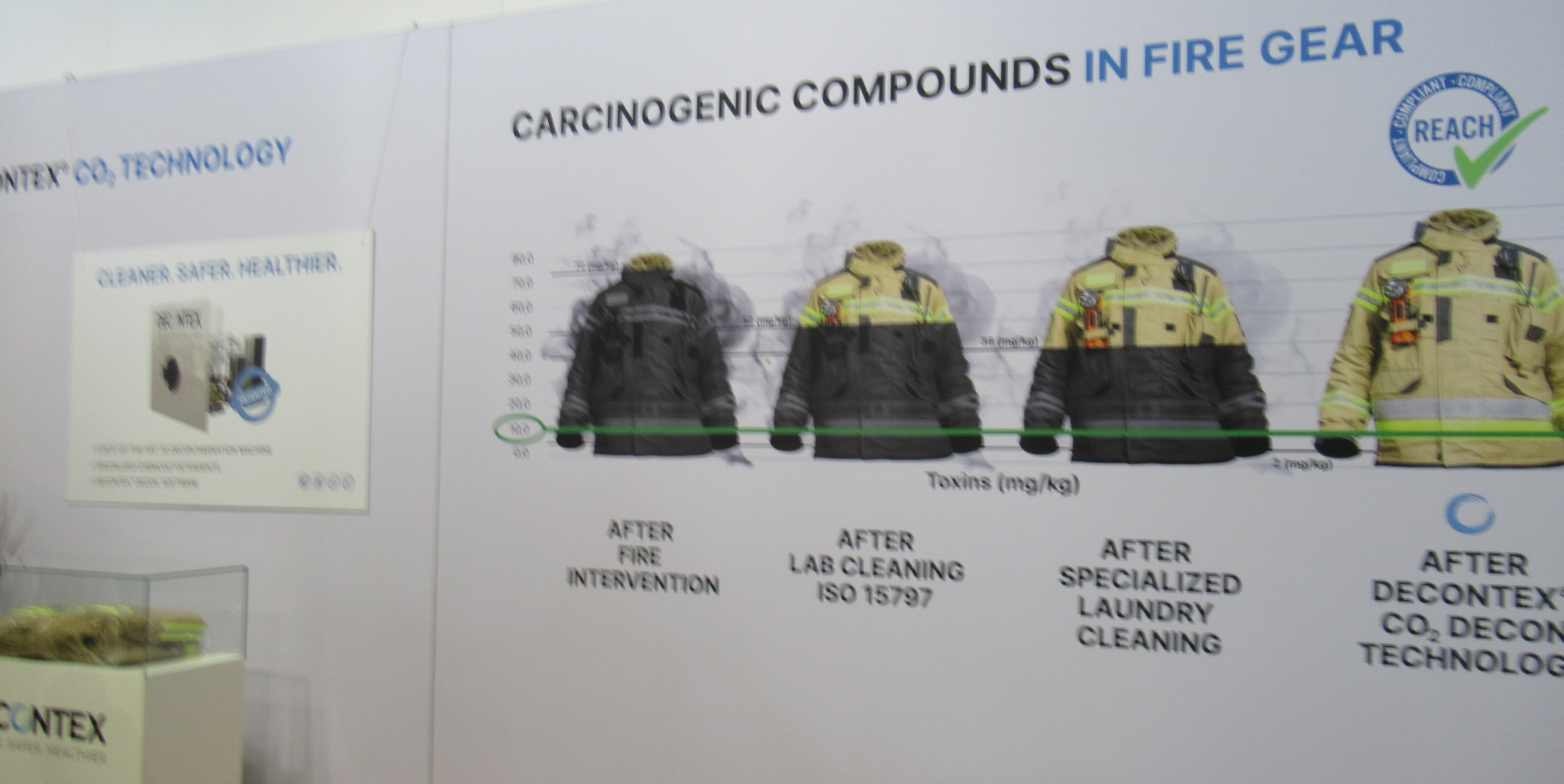
3 Liquid CO2 to clean PPE.
One impressive display was an all-stainless-steel cleaning room setup. An entire wall of cabinetry, work areas, and cleaning equipment was being shown. It did not include the washer/extractor or the drying equipment. The display created an image that should be the goal for every fire station (photo 4).

4 A stainless-steel PPE cleaning room.
Visibility is a cornerstone of the entire European fire service. Not only are they adamant about their apparatus being visible (always fluorescent yellow markings), but they also emphasize the importance of their PPE being visible. They use much different reflective trim patterns and often different colors of outer shell material. Most of the reflective trim is glued rather than sewn onto the gear (photo 5). Of particular interest was a set of gear being displayed by GoodPro, which had lights embedded. The lights could be dimmed, and the flashing rate and pattern were adjustable.
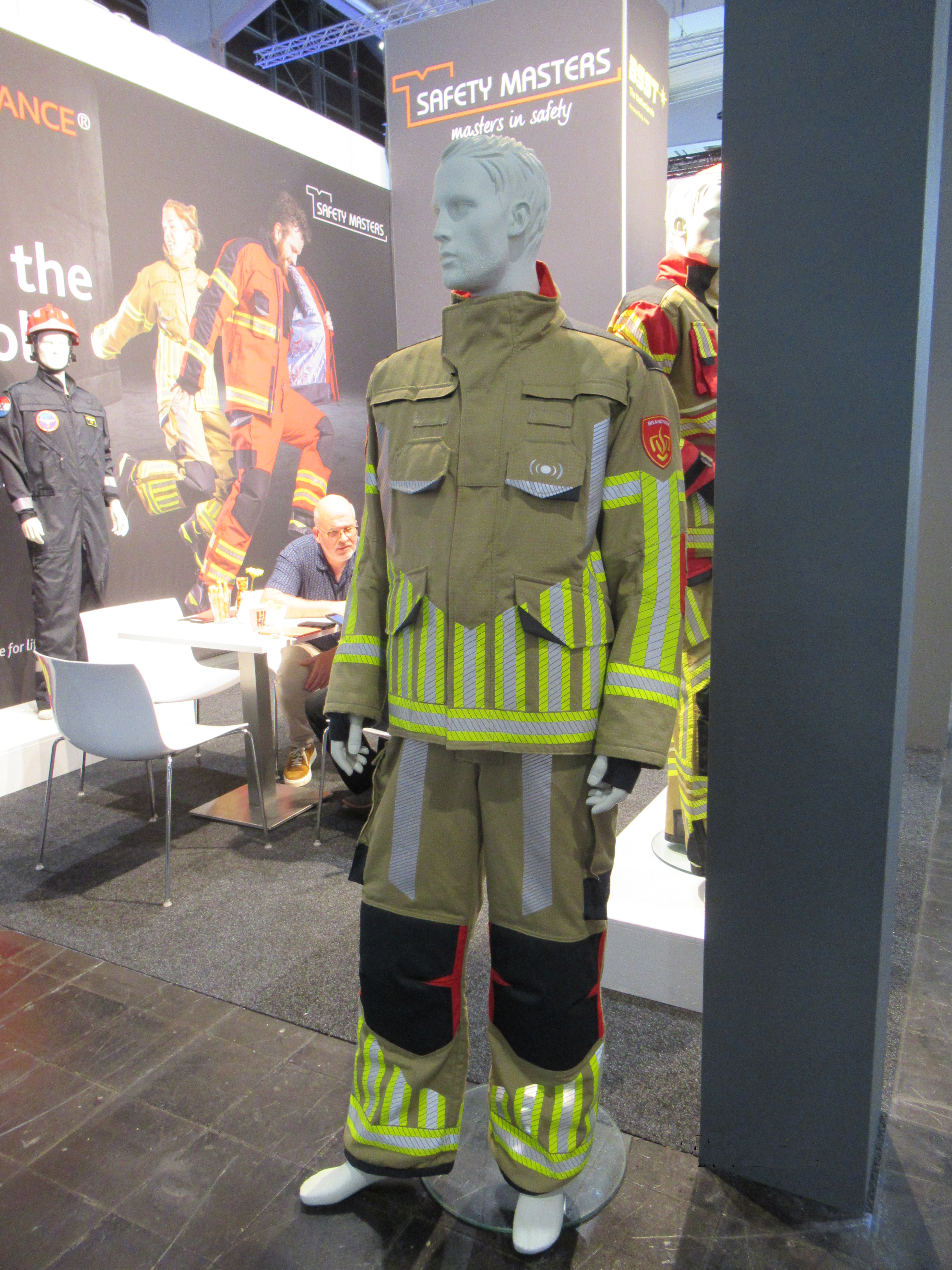
5 European turnout gear features unique trim patterns.
The Teijin company was introducing an interesting concept in PPE body cooling— a turnout gear liner that was just under a half-inch thick that consisted of tiny honeycomb-shaped air spaces. Each honeycomb was about 3⁄8 inch across. The concept takes advantage of dead air space for cooling. This idea was also applied to a vest for wearing in the nonfirefighting environment. The vest included four small battery-powered fans (around 2 inches in diameter), which circulated air throughout the interior of the vest. When the vest was worn, the cooling effect was very noticeable.
A couple of footwear companies were showing lace-up style firefighting boots that hold a lot of promise. These leather boots are designed so firefighters can custom fit the boot to their foot, ankle, and lower leg. Once the fit is obtained, it can be “set” and the boot cinched or uncinched with a simple tug or release for ease in donning and doffing (photo 6).

6 Lace-up leather turnout boots offer customized fits.
There were two items of interest regarding SCBA. Carbon Cylinder S.r.l. introduced a new air cylinder that was “square” in shape. Made of carbon, it had rounded edges and was extremely lightweight. Unfortunately, it is not yet available in the United States. But, if the price is affordable, it could be a very popular item and reduce the weight of an SCBA (photo 7).
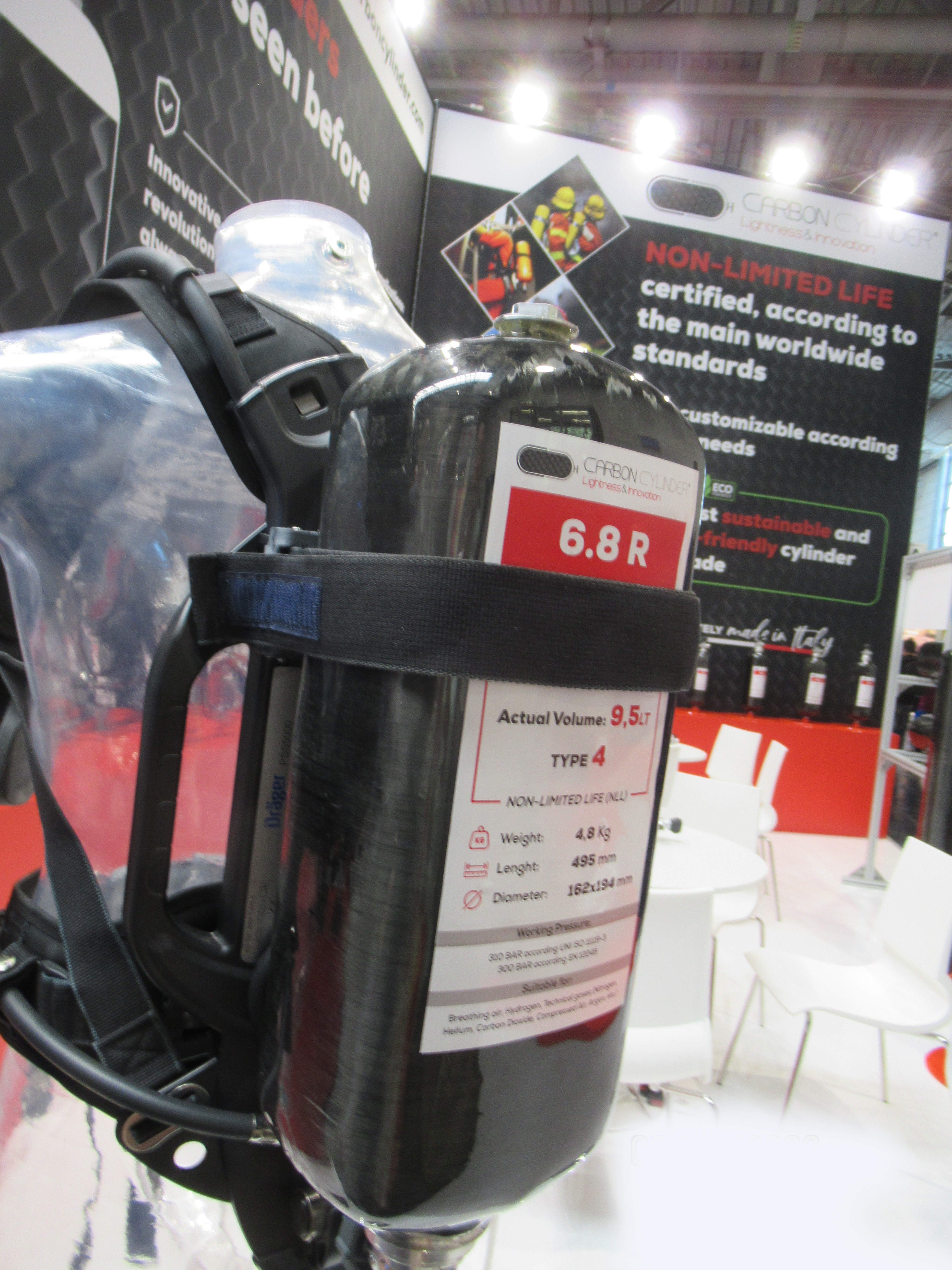
7 A square SCBA bottle.
Another item of note was a “rebreather” closed-circuit SCBA by Drager. This unit will provide prolonged use for hazmat or other long-duration emergency scenarios. The exhaled air is captured and rebreathed. A small oxygen tank brings the oxygen level back up from 16% to 21% (photo 8).
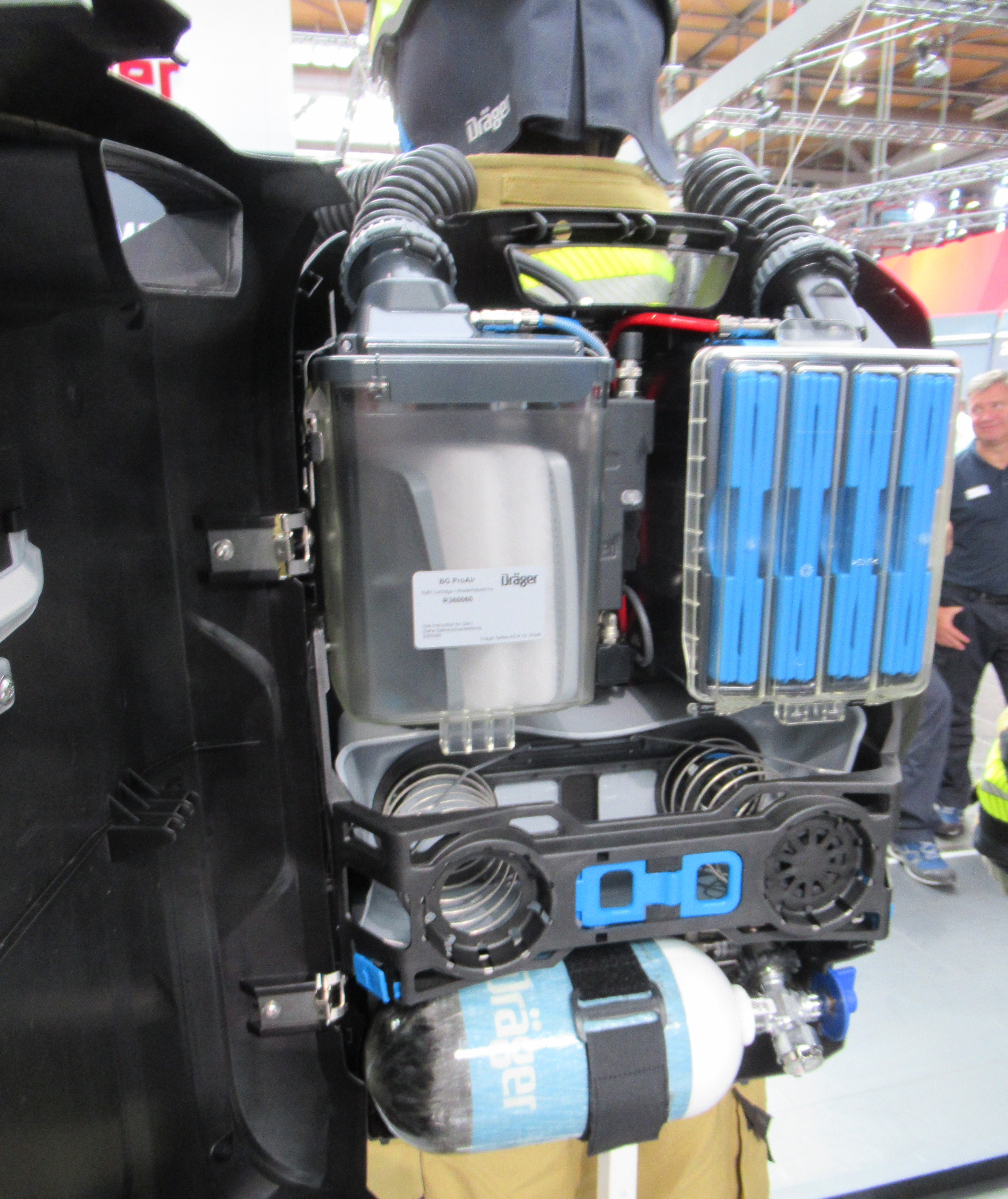
8 A closed-circuit rebreather system for prolonged hazmat responses.
ROBERT TUTTEROW retired as safety coordinator for the Charlotte (NC) Fire Department and is a member of the Fire Apparatus & Emergency Equipment Editorial Advisory Board. His 44-year career includes 10 as a volunteer. He has been very active in the National Fire Protection Association through service on the Fire Service Section Executive Board and technical committees involved with safety, apparatus, and personal protective equipment. He is a founding member and president of the Fire Industry Education Resource Organization (F.I.E.R.O.).

